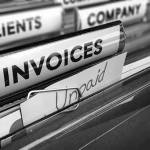In the final quarter of 2023, County Court Judgments (CCJs) issued in England and Wales rose sharply, with over 237,000 judgments registered—an increase of 16% on the previous year. This trend is not isolated. Recent data from Registry Trust also indicates that the total value of debt judgments is increasing, reflecting the growing reliance on formal recovery methods. With both individuals and businesses under increasing financial strain, understanding the legal and practical options available for recovering debts has never been more important. This article examines the key methods of debt recovery in England and Wales, assessing their suitability, advantages, and drawbacks.
County Court Judgments (CCJs)
A County Court Judgment is a court order that confirms a debtor owes a specific amount to a creditor. It is often the starting point for formal debt recovery. The creditor files a claim through the county court, and if the debtor fails to respond or disputes unsuccessfully, the court will issue a judgment. Once in place, the judgment enables the creditor to apply for enforcement, such as instructing bailiffs or applying for a charging order.
The advantage of a CCJ is that it gives the creditor a legally enforceable recognition of the debt. It also negatively affects the debtor’s credit record, which can pressure them into settling. However, CCJs can be slow to obtain and subject to challenge by the debtor. There are also court fees and, if solicitors are involved, legal costs that may not be fully recoverable.
High Court Enforcement
For debts over £600 that are not regulated by the Consumer Credit Act, a CCJ can be transferred to the High Court for enforcement. This enables creditors to instruct a High Court Enforcement Officer (HCEO), who has wider powers than county court bailiffs.
High Court enforcement is often faster and more effective. HCEOs may attend the debtor’s premises without appointment and have the authority to seize and sell goods if necessary. However, this process carries higher costs, which the debtor is usually liable for—but the creditor may be exposed to these if enforcement fails. Some debtors may also seek to challenge enforcement on technical grounds.
Attachment of Earnings Orders
Where a debtor is employed, a creditor can apply for an Attachment of Earnings Order. If granted, the debtor’s employer is required to deduct a portion of their wages each payday and send it directly to the creditor.
This method ensures regular payments and removes the need for direct interaction with the debtor. However, it only works if the debtor is in PAYE employment. It also offers limited amounts per month, based on income thresholds, and may take a long time to clear a large debt.
Charging Orders
A Charging Order secures a debt against a debtor’s property, typically their home. Once in place, the creditor becomes a secured creditor in relation to that asset. While the debtor is not required to sell the property immediately, the debt must be paid upon any sale or remortgage.
Charging Orders can be a useful long-term strategy and provide greater security. They are particularly suitable where the debtor has assets but is avoiding payment. That said, the creditor may not realise funds for years, and the debtor may successfully oppose an order for sale depending on personal circumstances and equity levels.
Debt Relief Orders (DROs)
DROs are available to individuals with relatively low debts (under £30,000), few assets, and limited income. The application is made via an approved intermediary, such as a debt advice charity, and if granted, the debtor receives a 12-month moratorium on debt enforcement.
DROs are inexpensive and offer a clear route to debt write-off for eligible individuals. From a creditor’s perspective, however, DROs can result in a total loss, especially as creditors cannot oppose the order. DROs are best understood as a form of social policy rather than a recovery mechanism.
Individual Voluntary Arrangements (IVAs)
An IVA is a formal agreement between a debtor and their creditors to repay a portion of their debts over a fixed period, usually five years. It must be supervised by a licensed insolvency practitioner and approved by creditors holding 75% of the debt value.
IVAs allow for structured repayment and may result in a significant portion of the debt being written off. Creditors benefit from coordinated recovery efforts and often receive more than they would through bankruptcy. However, not all debtors qualify, and the process is complex and reliant on the debtor’s long-term financial stability.
Bankruptcy
Bankruptcy is often viewed as a last resort. It can be initiated by the debtor or by a creditor owed at least £5,000. Once a bankruptcy order is made, the debtor’s assets are vested in a trustee, who will sell them and distribute proceeds to creditors.
For creditors, bankruptcy can offer transparency and finality, especially where there are multiple debts or suspected misconduct. However, it is not without risks: returns are often modest, and the process may write off most of the debt if there are insufficient assets. It also ends any individual enforcement actions.
Debt Collection Agencies
Many creditors opt to use external agencies to pursue debts. These agencies operate independently and may charge a commission on recovered amounts or buy debts outright at a reduced value.
Debt collection agencies can bring professionalism and persistence to debt recovery efforts, and free the creditor from administrative burdens. However, the effectiveness of this route varies widely, and it may not be suitable for high-value or sensitive cases. Creditors must also ensure compliance with relevant conduct rules and reputational risks.
HMRC and Tax Debts
Her Majesty’s Revenue & Customs (HMRC) possesses broad statutory powers to recover tax debts without court orders. These include taking control of goods, instructing third parties to make payment, or initiating insolvency proceedings.
While this route is not available to private creditors, it underscores how efficient statutory enforcement powers can be. Private creditors might compare this to the relative complexity and cost of civil enforcement.
Pre-Legal Approaches
Before legal proceedings, many creditors choose to engage in non-court strategies such as issuing reminder letters, calling the debtor, or offering payment plans. Sometimes a solicitor’s letter before action is enough to prompt settlement.
Pre-legal recovery is cost-effective and preserves commercial relationships. It also ensures compliance with the pre-action protocol for debt claims. However, success depends on the debtor’s willingness to engage, and delays may limit the creditor’s options later.
Conclusion
While the methods of debt recovery in England and Wales vary in cost, speed, and effectiveness, the best approach often depends on the debtor’s circumstances, the value of the debt, and the creditor’s commercial priorities. CCJs and enforcement options may be suitable for straightforward cases, while insolvency proceedings or charging orders are better suited to more complex or higher-value situations. One area likely to grow in importance is the use of data and digital tools in debt recovery. Increasingly, creditors are using credit reports, open banking tools, and AI-driven analytics to assess a debtor’s means before deciding on enforcement. The recent pilot schemes involving online money claims and digital enforcement requests show that the courts are also moving in this direction.


